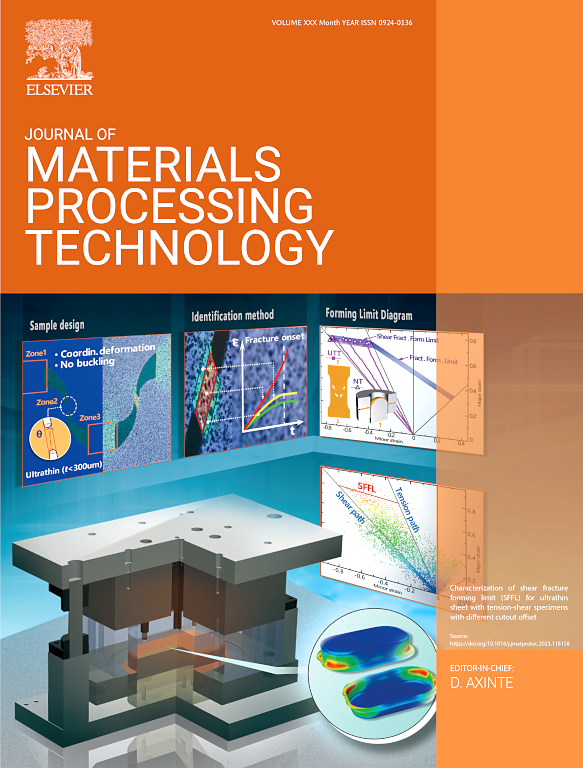Porosity evolution mechanisms, influencing factors, and ultrasonic-assisted regulation in joining high Mg-content aluminum alloys
IF 6.7
2区 材料科学
Q1 ENGINEERING, INDUSTRIAL
Journal of Materials Processing Technology
Pub Date : 2025-02-01
DOI:10.1016/j.jmatprotec.2024.118706
引用次数: 0
Abstract
Over the years, porosity defects have been one of the significant factors limiting the development of aluminum alloys during the joining process. This paper employs the process of laser metal deposition welding (LMDW) to join Al-Mg-Sc-Zr alloys with high Mg content. Through the micromorphology of pores, elemental distribution, and finite element analysis (FEA), the mechanisms of formation, growth, and spillage of pore defects in aluminum alloys containing low-melting-point elements are explored. This study not only delves into the mechanism of low-melting-point element-induced porosity and enriches the principle of porosity formation, but also explores the influence of heat transfer paths and flow fields on the porosity enrichment during the butt-welding process, which provides a reference direction for future research. The study examines the effects of different process parameters and layers on the distribution and size of pores, revealing that pore-rich areas are concentrated along the fusion lines and the interlayer fusion lines. Furthermore, the three-dimensional model is constructed via finite element analysis to simulate the distribution of Mg and the flow field within the melt pool. Finally, ultrasonic vibration is introduced to mitigate porosity defects. Through controlled experiments, the optimal ultrasonic vibration current parameters are identified that minimize Mg loss and alleviate pore accumulation along the fusion lines and interlayer fusion lines. Compared with no ultrasonic vibration, the porosity at the melt pool center ameliorated by 20 %, the porosity near the fusion line decreased by 22 %, and the tensile strength increased by 41.9 %.
求助全文
约1分钟内获得全文
求助全文
来源期刊

Journal of Materials Processing Technology
工程技术-材料科学:综合
CiteScore
12.60
自引率
4.80%
发文量
403
审稿时长
29 days
期刊介绍:
The Journal of Materials Processing Technology covers the processing techniques used in manufacturing components from metals and other materials. The journal aims to publish full research papers of original, significant and rigorous work and so to contribute to increased production efficiency and improved component performance.
Areas of interest to the journal include:
• Casting, forming and machining
• Additive processing and joining technologies
• The evolution of material properties under the specific conditions met in manufacturing processes
• Surface engineering when it relates specifically to a manufacturing process
• Design and behavior of equipment and tools.
 求助内容:
求助内容: 应助结果提醒方式:
应助结果提醒方式:


